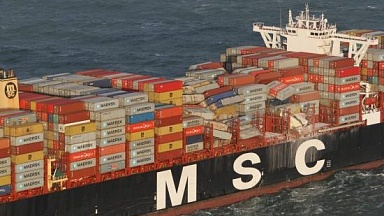Container spot rates from Asia to North Europe were flat this week, due to the Chinese New Year holiday, with Drewry’s WCI holding at $13,686 per 40ft, the Freightos Baltic Index FBX, just dipping a little to $14,744, and Xeneta’s XSI remaining at $14,521 on the week.
«We have quite a lot of rolled cargo to move and our booking visibility through to the end of March is positive, but we are not so sure about the outlook thereafter,» a carrier source told The Loadstar.
Meanwhile, Peter Stallion, head of air and containers at Freight Investor Services, said that there were some signs of a softening in rates on the tradelane.
«We’ve started to see cracks in price trends,» said Mr Stallion.
«If this price action is sustained, you may see this result in a drop in the value of second half 2022 and 2023 futures,» he said.
Nevertheless, according to a UK-based NVOCC there is so far no indication that the lines are prepared to discount rates on the route.
«They are still playing hardball and although I haven’t heard of any more increases coming down the track, there is no sign yet that things will get any easier as far as allocations and rates,» he said.
However, it does seem that Maersk’s strategy, and that of some of its peers to lock their biggest shippers into two- and three-year contract deals may be losing some momentum, given the monetary and geopolitical tensions of recent months.
Mr Stallion said that anecdotally he had heard that «the uptake of very long-term deals has been uncertain».
Maersk will publish its annual report next week and provide an outlook for 2022.
During its Q3 earnings call CEO Soren Skou estimated that by the end of last year it would have 13m teu, or 63% of its annual long-haul trade volume, covered under long-term contract deals.
Elsewhere, on the transpacific, the chronic port congestion at US west coast ports continues to underpin spot rates, albeit that the stymied supply chain ensured that the traditional pre-Chinese New Year booking surge did not happen this year, and consequently there was no spurt in rates.
Although short-term rates were stable this week, unlike the Asia — Europe tradelane, the spot rate indices for Asia — North America vary considerably, with the WCI reading for the US west coast at $10,571 per 40ft, the FBX at $15,218 and the XSI at $8,466.
The disconnect between the indices for the route is explained by the level of premium surcharges that are included in the index ratings.
Moreover, widespread rumours this week that carriers are about to announce a fresh round of GRIs on cargo from Asia to the US west coast, due to their increased operational costs, are doing the rounds.
Notwithstanding the backlog of circa 100 vessels laden with imports awaiting a berth and labour, further down the road the looming expiry of the existing labour contract on 1 July, and the history of conflict surrounding the negotiations between the union and employers, suggests that shippers will look to front-load shipments in advance of any industrial action at the west coast terminals, ensuring rates remain at highly elevated levels.





